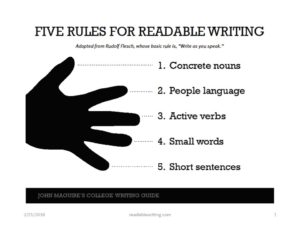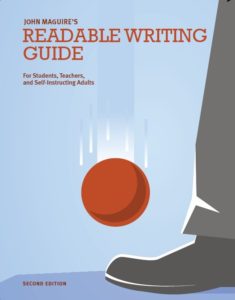 I’ve been doing this method for 20 years, and it’s second nature to me now. I cannot imagine going back to the old ways any more, and frankly I have to listen hard to today’s teachers telling me what they do in order to remember what I used to do, long ago.
I’ve been doing this method for 20 years, and it’s second nature to me now. I cannot imagine going back to the old ways any more, and frankly I have to listen hard to today’s teachers telling me what they do in order to remember what I used to do, long ago.
In Houston over the weekend I had a long breakfast with David Ross of Houston Community College. Great guy, bright and good talker. We talked a blue streak for two hours, about all kinds of things, but mostly about language. He taught me stuff about a, an, the that I did not know and had not figured out.
To get across to him the research base of this course, I told him about its first three years, when I had the luxury to be teaching 9 to 10 courses a year, fall, spring and summer, at the Berklee College of Music. Most of these were Comp I.
“David, once I figured out this method and saw it working, all I wanted to do was test it out. I had a lab experiment going and I started a new experiment every semester. Back in the mid-90s, I taught about 8 Comp I sections per year, so during the first three years of Readable Writing, I taught it 24 times.”
He understood. I wanted to share that with anyone who isn’t clear how much research and experience has gone into this method. I taught it 24 times in three years!
When I got back from Houston, I had an email from JOHN LANGAN.
He has written and published many textbooks and workbooks for the community college and high school markets. He’s well known in the field, the Pope of Community College writing instruction. He runs Townsend Press.
He bought a copy of the College Writing Guide, read it very closely, responded that he believes in teaching students clear thinking before teaching them clear writing. I wrote back and explained how the skills of RW (see hand image above) actually train students into clear thinking as they train for clear writing. Here’s what I told him, and what I now think is true.
Dr. Langan, I believe my method works this way. Searching about for concrete nouns, human beings and active verbs–as my students must do to meet course requirements–activates the brain a good deal. If I am writing about, say, to choose a cliché, racism, and I must find objects to put into my writing because it’s required, I will have to think hard to find those objects in my memory that relate to racism. Maybe it’s the coffee cup and the cigarillo of the deputy sheriff in the movie “Three Billboards Outside Ebbing, Missouri.” Maybe it’s the porch his prejudiced mother sits on in her rocking chair as she encourages him to be mean to people who can’t retaliate.
The mental effort of looking for those images and objects is thinking.
Also a form of thinking, I assert, is changing a to-be verb into a real active verb. To change He is a collector of baseball cards one has to weigh the new verb one will use: collects, acquires, likes to grow his collection, pursues, searches for…. All that mental effort is thinking, and thinking spent at the right level, which is attending to and weighing words.
The same general idea applies to each of the 5-finger skills. It is thinking when one puts in mental effort to (1) search for people words to use, (2) control average sentence length, and (3) edit for conciseness.
These are the thoughts of a craftsman trying to work his craft and be clear for the reader, and because these crafty moves are undertaken in the service of getting an idea across, they are about “improving thinking” as well. Basic fact: if you improve the appearance of your inchoate idea on the page, you have improved the idea.

